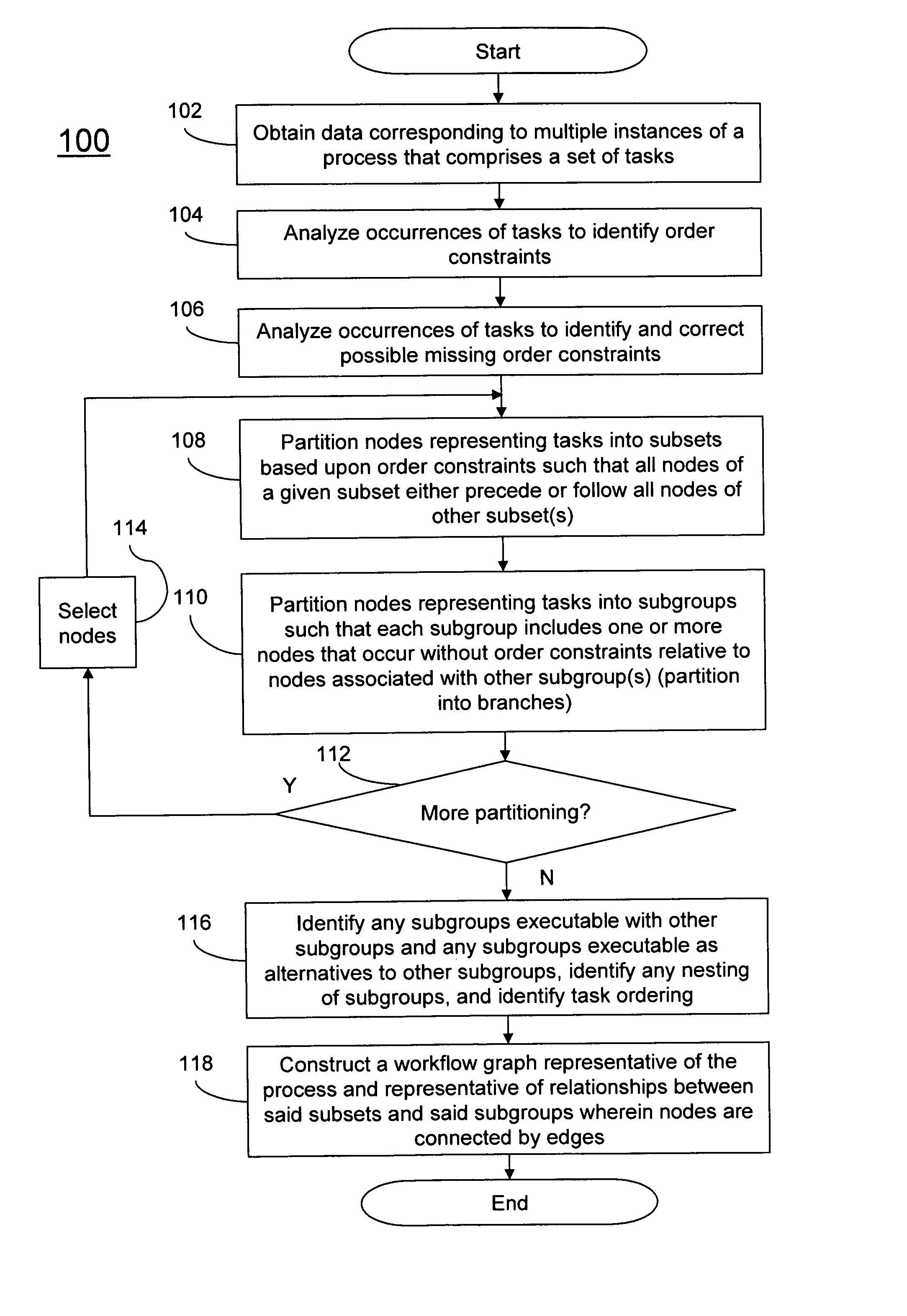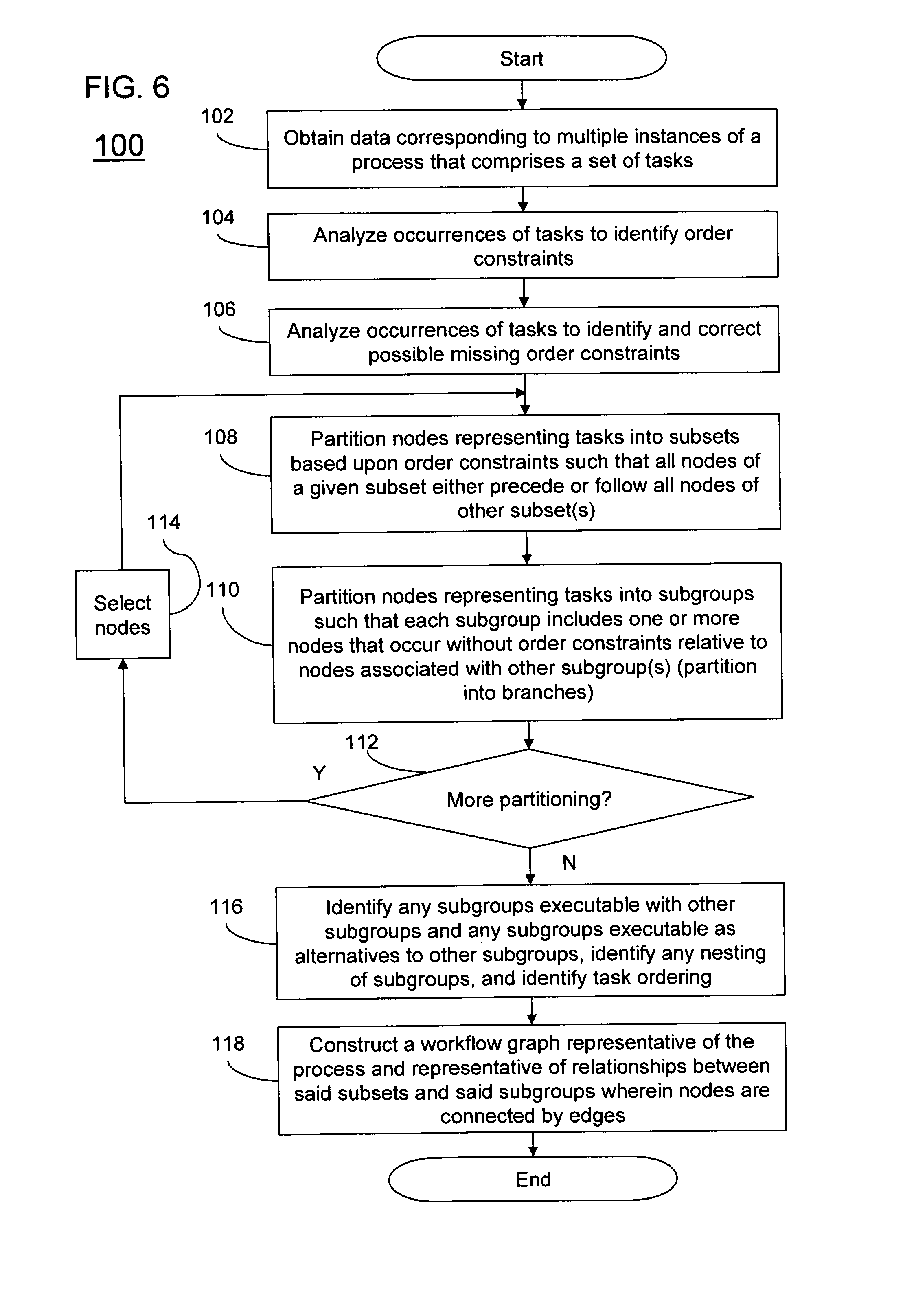Methods and apparatus for identifying workflow graphs using an iterative analysis of empirical data
a workflow and empirical data technology, applied in forecasting, data processing applications, multi-programming arrangements, etc., can solve the problems of a manual workflow development and a formidable task of human observation, and achieve the effect of improving the understanding of the process used and facilitating the optimization of those processes
- Summary
- Abstract
- Description
- Claims
- Application Information
AI Technical Summary
Benefits of technology
Problems solved by technology
Method used
Image
Examples
example 1
[0122]Consider the hypothetical data reflected in FIG. 7A and the corresponding ordering information reflected in FIGS. 7B-7E. There are eight nodes associated with this data, and these nodes are referred to as T1, T2, T3, . . . , T8 as reflected in FIGS. 7A-7E. In this example, these nodes make up the set N referred to in FIG. 8. This hypothetical data will now be discussed in connection with the exemplary method 600 shown in FIG. 12 to illustrate how the method 600 can generate a workflow graph for this hypothetical data.
[0123]Steps 102 and 104 have already been discussed in connection with the hypothetical data, and it will be assumed for the sake of this example that no potentially missing order constraints have been identified (step 106). An initial iteration of sequence decomposition identified at step 108 can be carried out according to the method 200 illustrated in FIG. 8. In particular, at step 202 sets S, P, F and Q are set to be empty. At step 204, we assume that node T1 ...
example 2
[0153]Examples relating to removing order constraints to facilitate sequence and branch decomposition will now be described. Consider a set of tasks having order constraints such a graph of the corresponding nodes is illustrated as shown in FIG. 19A. A process with this set of order constraints is not consistent with the model because nodes that are siblings do not necessarily share exactly the same parents. Order constraints can be removed from the corresponding data structure containing order constraint information so as to make the data consistent with the graph model according to the methods illustrated in FIGS. 13, 14 and 15. For FIG. 19A, three possible consistent final graphs are shown in FIGS. 19B-19D.
[0154]With reference to the method 700 of FIG. 13, the process 700 will first determine whether any single direct constraint (i.e., n=1 initially) can be removed to create a consistent graph. Since there are multiple branch connections between the first and second layers and th...
PUM
 Login to View More
Login to View More Abstract
Description
Claims
Application Information
 Login to View More
Login to View More - R&D
- Intellectual Property
- Life Sciences
- Materials
- Tech Scout
- Unparalleled Data Quality
- Higher Quality Content
- 60% Fewer Hallucinations
Browse by: Latest US Patents, China's latest patents, Technical Efficacy Thesaurus, Application Domain, Technology Topic, Popular Technical Reports.
© 2025 PatSnap. All rights reserved.Legal|Privacy policy|Modern Slavery Act Transparency Statement|Sitemap|About US| Contact US: help@patsnap.com



